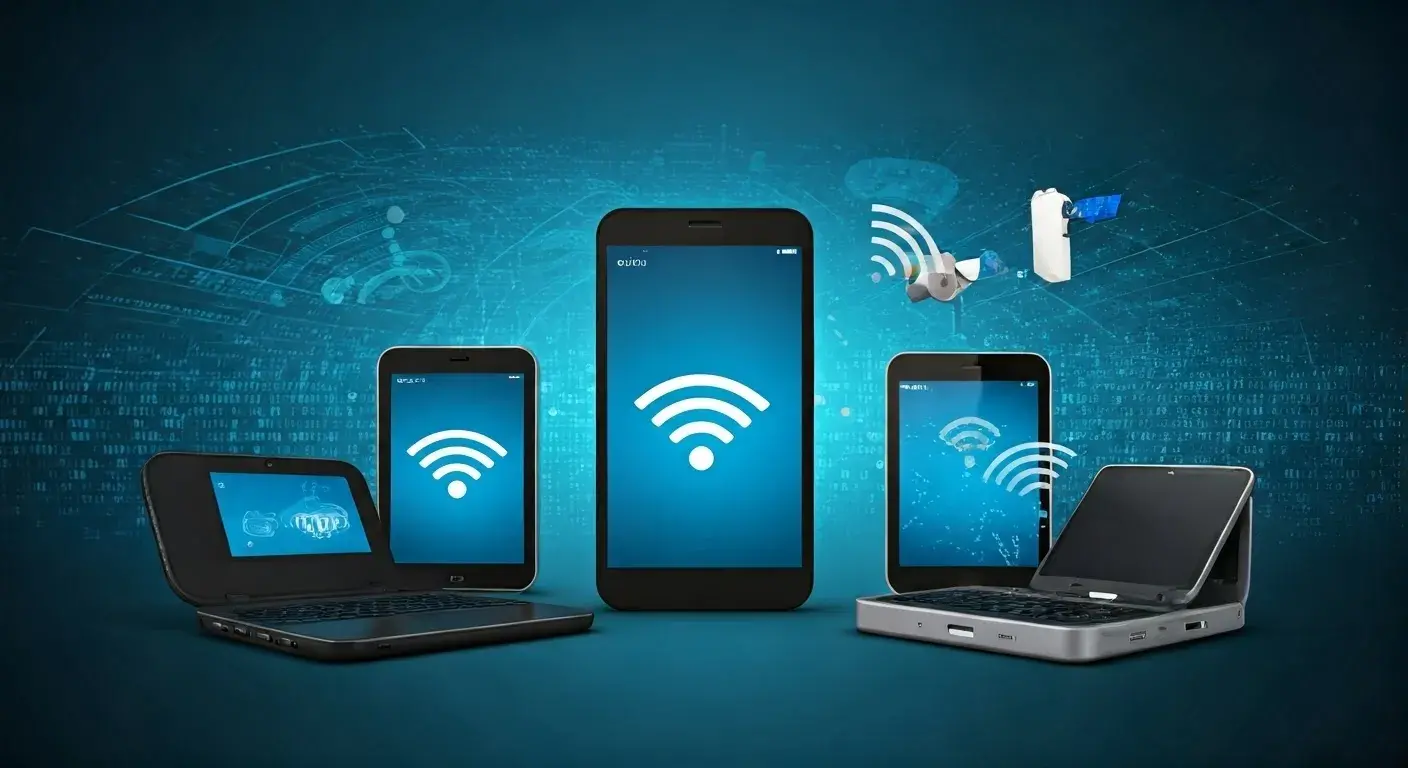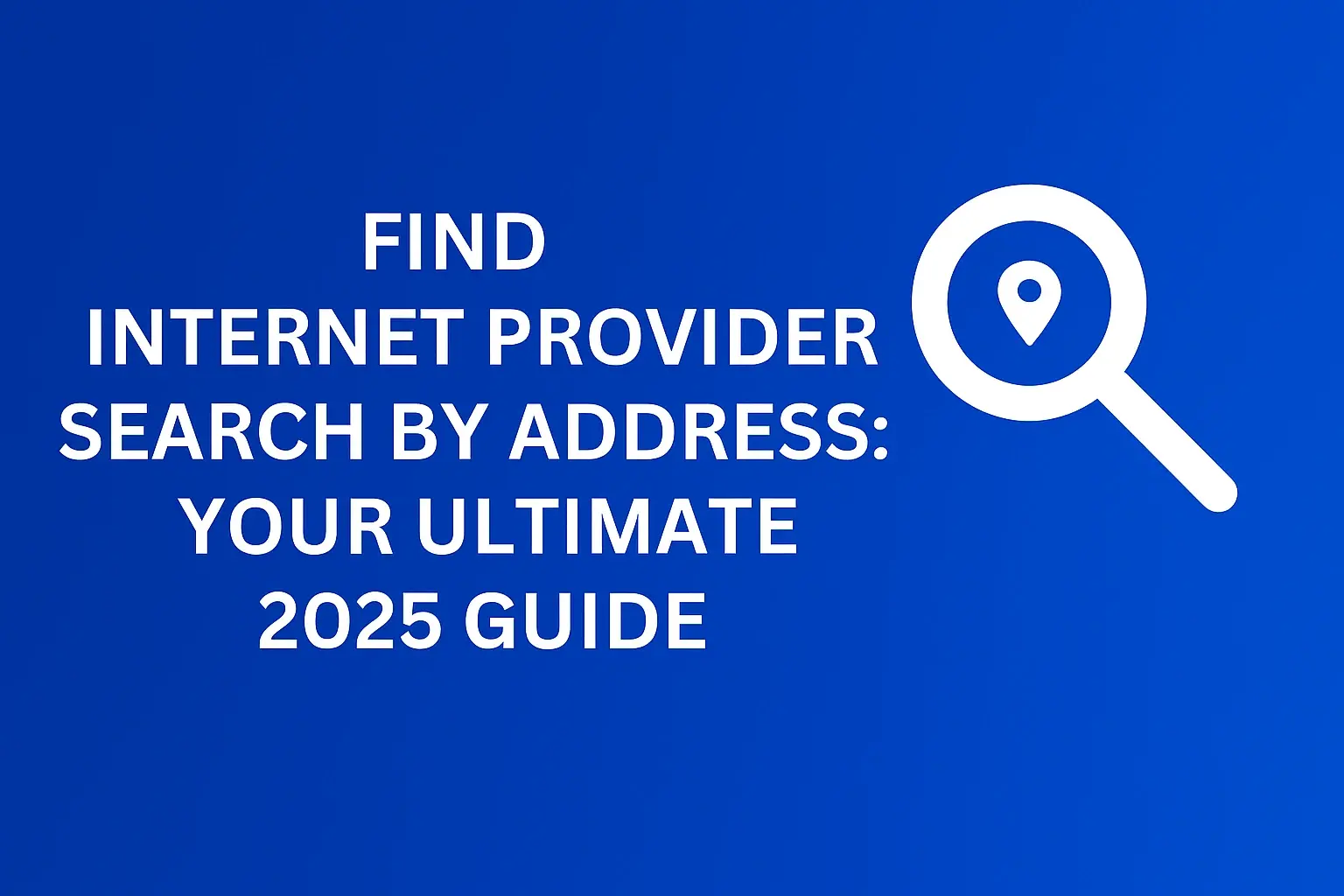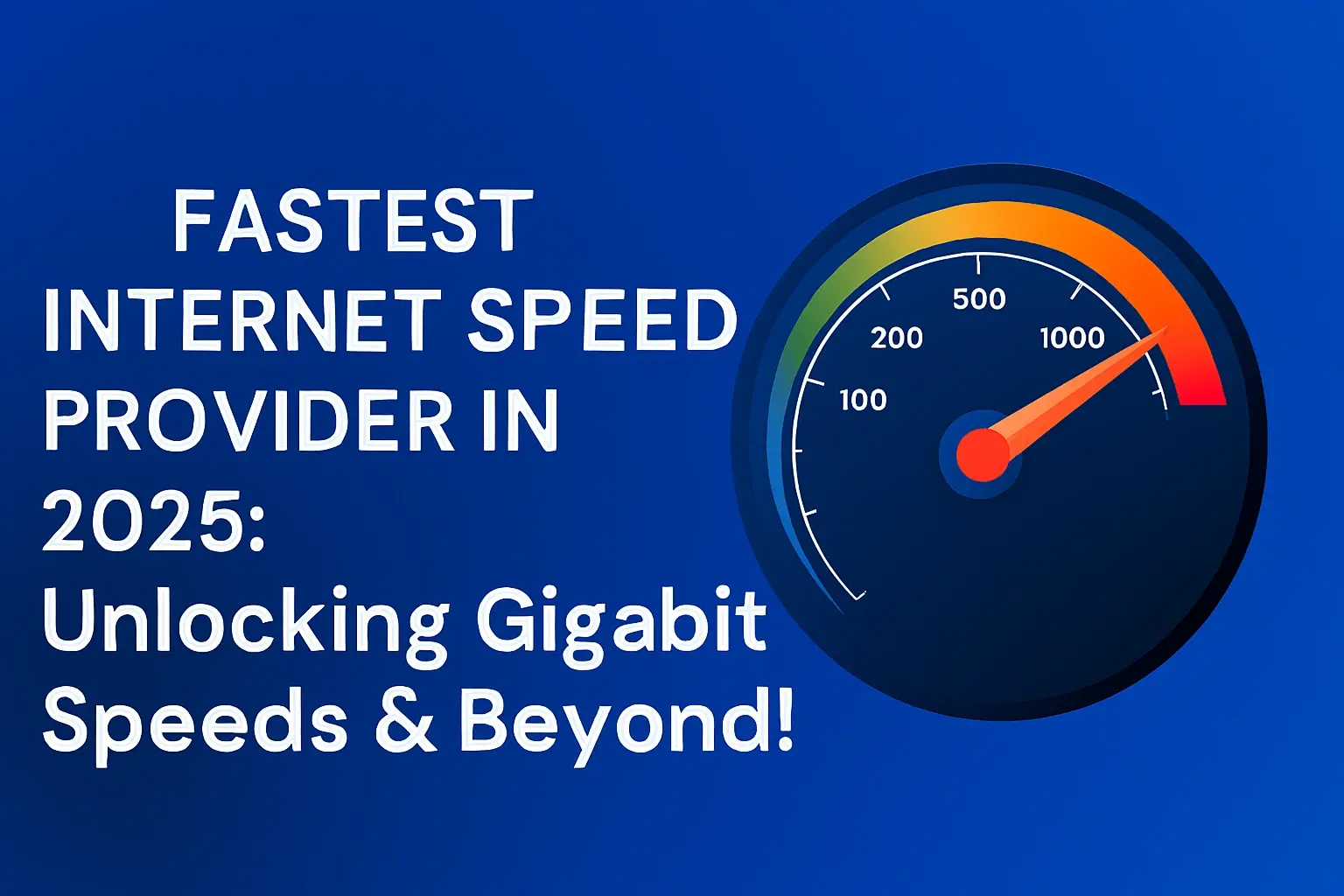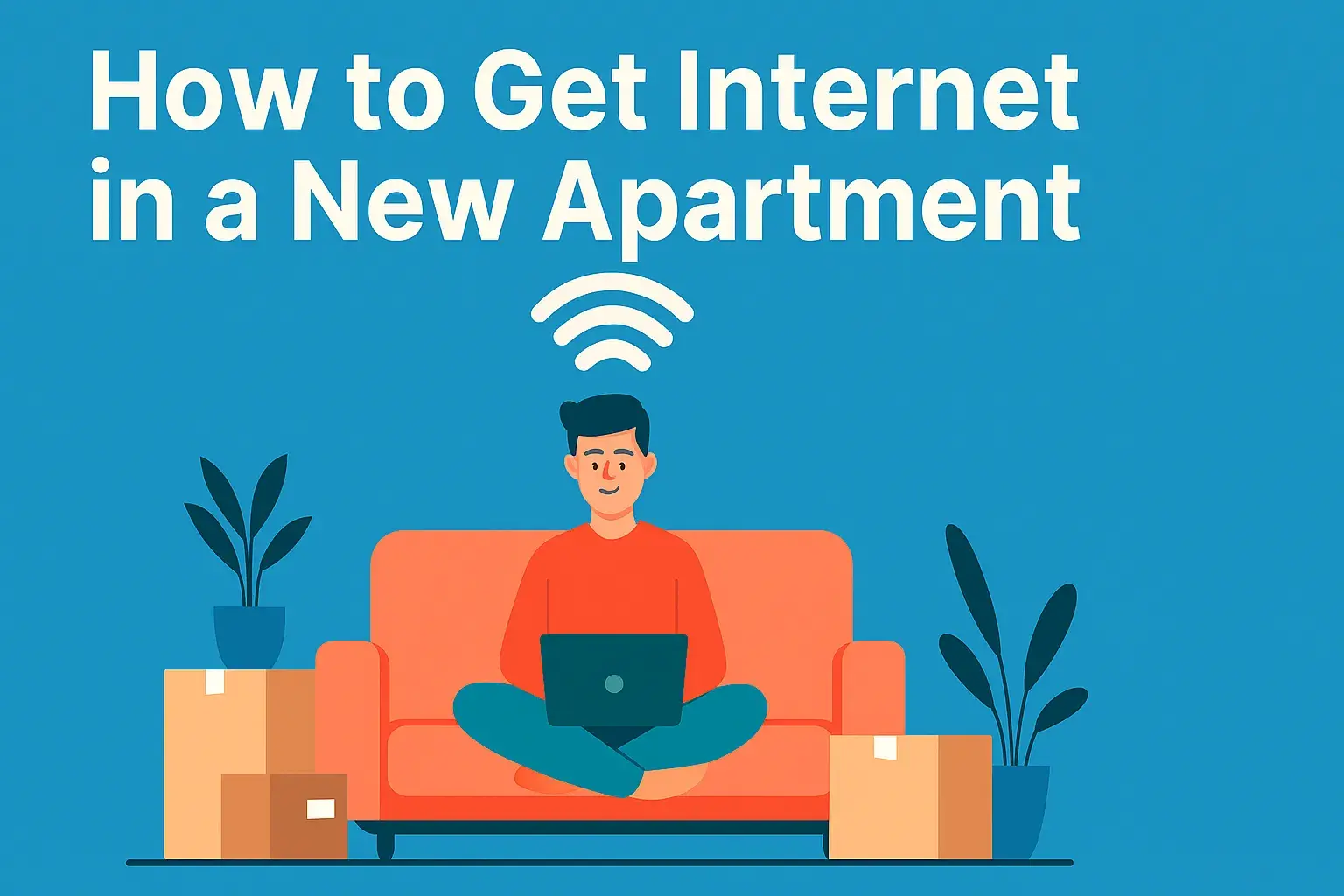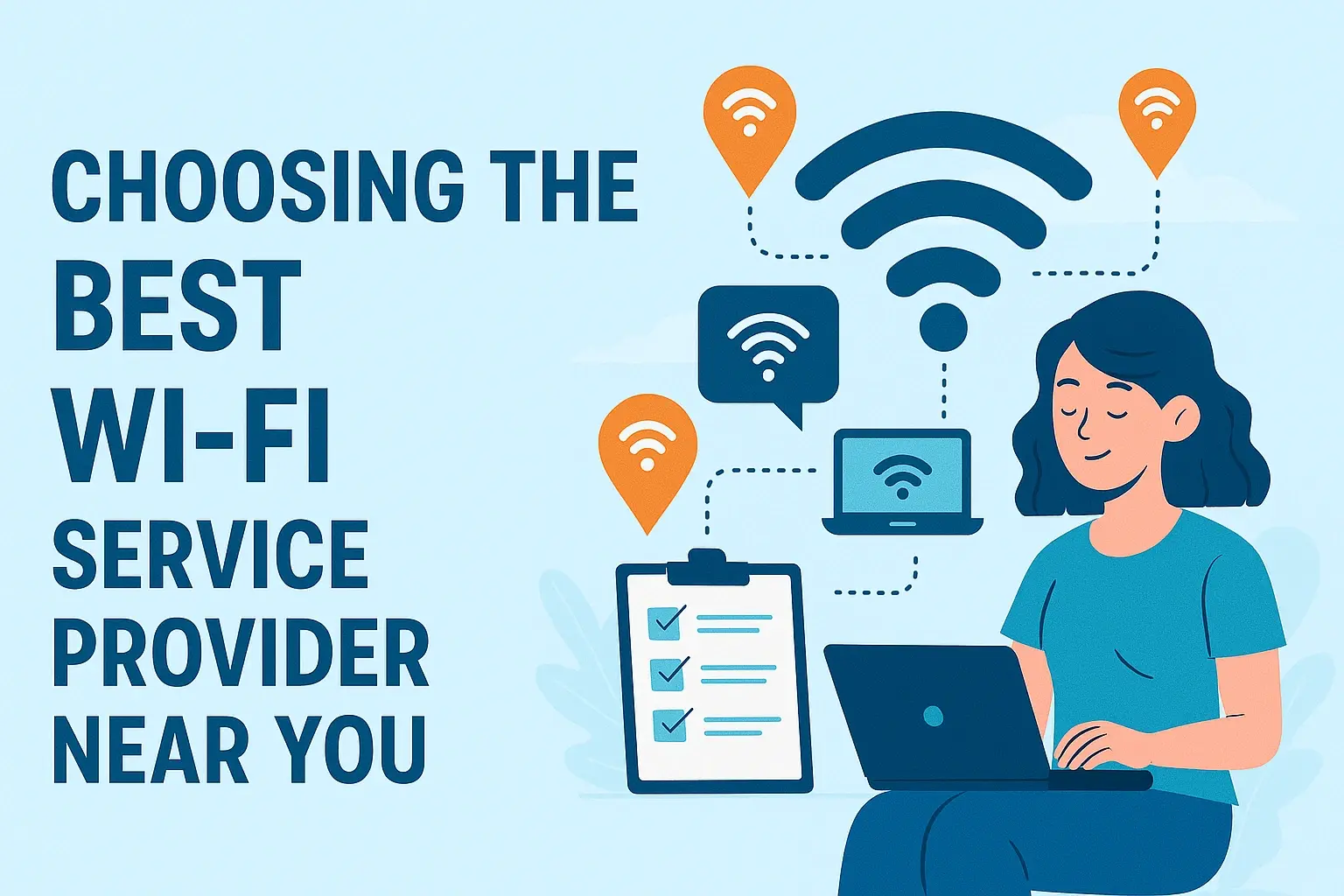Struggling to find reliable internet service or looking for alternatives to traditional ISPs? In 2025, getting online without a conventional provider is more achievable than ever. Explore cutting-edge solutions like satellite internet, fixed wireless access, mobile hotspots, and community-driven networks. Discover your best path to connectivity!
Why Go Without a Traditional Provider? Unlocking Your Internet Options
The landscape of internet connectivity is rapidly evolving. While traditional cable and fiber providers have long dominated, many users are seeking alternatives for a variety of compelling reasons:
- Limited Availability: In rural or underserved areas, traditional broadband simply isn't an option.
- High Costs: Monthly subscription fees can be prohibitive, especially for basic internet needs.
- Slow Speeds: Existing options might offer speeds that are no longer sufficient for modern online activities like streaming or remote work.
- Contractual Obligations: Many users want to avoid long-term contracts and prefer more flexible solutions.
- Desire for Control: Some individuals prefer to own their equipment and manage their connections more directly.
Fortunately, 2025 offers a diverse array of solutions that bypass the need for a traditional Internet Service Provider (ISP). Let's dive into the most effective ways to get online without one.
Satellite Internet: Reaching the Unreachable
For those in the most remote locations where terrestrial broadband is nonexistent, satellite internet has long been the primary solution. While historically plagued by high latency and slower speeds, recent advancements have dramatically improved performance.
How Satellite Internet Works
Satellite internet uses a dish installed at your location to communicate with a satellite orbiting Earth. This satellite then relays data to and from a ground station connected to the internet backbone.
Key Players and 2025 Trends
- Starlink (SpaceX): Continues to expand its low-Earth orbit (LEO) satellite constellation, offering significantly lower latency and higher speeds compared to traditional geostationary satellites. Plans in 2025 are becoming more accessible, with options for residential, RV, and maritime use. Expect speeds averaging 100-200 Mbps download, with latency as low as 20-40 ms.
- HughesNet and Viasat: These providers use geostationary satellites. While latency is higher (typically 600+ ms), they offer broader coverage. Newer satellite generations are improving speeds, but they remain a secondary choice for performance-critical applications compared to LEO options.
Pros and Cons of Satellite Internet
| Pros | Cons |
|---|---|
| Global coverage, even in the most remote areas. | Higher latency than terrestrial options (though LEO is improving). |
| No need for ground infrastructure like cables or towers. | Can be affected by severe weather (heavy rain, snow). |
| Starlink offers competitive speeds and latency for LEO. | Equipment costs can be high upfront. |
| Flexible plans available for various needs (e.g., RVs). | Data caps may still apply to some plans. |
Getting Started with Satellite
The process typically involves ordering equipment online, which includes a satellite dish and router. You'll then schedule a professional installation or, in some cases, perform a self-installation. Ensure you have a clear, unobstructed view of the sky in the direction of the satellite's orbit.
Fixed Wireless Access (FWA): The Next Best Thing
Fixed Wireless Access (FWA) is a rapidly growing technology that provides high-speed internet to a fixed location wirelessly. It's an excellent alternative for areas where traditional wired infrastructure is lacking but where cellular signals are strong.
How Fixed Wireless Works
FWA uses radio waves to transmit internet signals from a nearby tower to a receiver installed on your home or business. Unlike mobile hotspots, this is a dedicated connection designed for a specific location.
Key Providers and 2025 Advancements
- 5G FWA: Major carriers like T-Mobile, Verizon, and AT&T are heavily investing in 5G FWA. This technology leverages the speed and capacity of 5G networks to deliver home internet. Speeds can range from 150 Mbps to over 1 Gbps, with latency often below 30 ms. Many providers offer plans with unlimited data.
- Local Wireless ISPs (WISPs): Numerous smaller, regional WISPs operate across the country, often serving rural communities. They use various wireless technologies (including 5G, 4G LTE, and proprietary bands) to deliver broadband.
Pros and Cons of Fixed Wireless Access
| Pros | Cons |
|---|---|
| Often faster and more affordable than satellite. | Requires a clear line of sight to the provider's tower. |
| Lower latency than satellite, suitable for gaming and streaming. | Coverage can be spotty in areas with significant obstructions (dense trees, hills). |
| Installation is typically straightforward. | Speeds can vary based on network congestion and distance from the tower. |
| Many plans offer unlimited data. | Not available everywhere; relies on proximity to a tower. |
Getting Started with FWA
Check availability in your area using provider websites. If available, you'll typically order a router/receiver unit. Installation usually involves mounting the outdoor receiver and connecting it to your indoor router. Self-installation guides are often provided.
Mobile Hotspots & 5G Home Internet: Pocket-Sized Power
Leveraging cellular networks, mobile hotspots, and dedicated 5G home internet solutions offer flexible and often high-speed internet access, especially for those who are mobile or have limited wired options.
Mobile Hotspots Explained
A mobile hotspot uses a smartphone or a dedicated portable device to create a Wi-Fi network that other devices can connect to. This effectively turns your cellular data plan into a Wi-Fi connection.
5G Home Internet (Dedicated FWA)
This is a specialized form of FWA offered by major mobile carriers. Instead of using a portable hotspot, you get a dedicated modem/router that connects to the carrier's 5G network for home use. It's designed to be a direct competitor to traditional cable and fiber internet.
Key Considerations for 2025
- Data Caps: Be extremely mindful of data limits on your mobile plan or dedicated 5G home internet. Unlimited plans are becoming more common, but "unlimited" often comes with deprioritization after a certain threshold.
- Network Congestion: Performance can degrade during peak hours when many users are on the same cell tower.
- Device Capabilities: Ensure your smartphone supports hotspot functionality and that your data plan allows it. Dedicated 5G home internet devices are optimized for this purpose.
- Speeds: 5G Home Internet can offer speeds comparable to cable, often ranging from 100-300 Mbps download, with latency as low as 20-50 ms. Mobile hotspots are generally slower and more variable.
Pros and Cons of Mobile Hotspots & 5G Home Internet
| Pros | Cons |
|---|---|
| Highly portable (mobile hotspots). | Data caps can be restrictive on some plans. |
| Often uses existing cellular infrastructure. | Performance can be affected by network congestion. |
| 5G Home Internet offers competitive speeds and low latency. | Requires a strong cellular signal. |
| Flexible and can be a good backup option. | Battery life can be a concern for portable hotspots. |
Getting Started with Public Wi-Fi
For mobile hotspots, check your current smartphone plan or consider a dedicated mobile hotspot device. For 5G Home Internet, verify availability with carriers like T-Mobile, Verizon, or AT&T in your area. You'll typically receive a modem/router that you plug in and connect to.
Public Wi-Fi: Free Access, With Caveats
Public Wi-Fi networks, found in places like libraries, cafes, and community centers, offer a way to get online without a personal provider. While convenient for occasional use, they come with significant security and reliability considerations.
Where to Find Public Wi-Fi
- Libraries
- Coffee shops and restaurants
- Community centers
- Airports and train stations
- Some city parks and public spaces
Security Risks and Best Practices
Never conduct sensitive transactions (banking, shopping) on public Wi-Fi. These networks are often unsecured, making your data vulnerable to interception. Always use a Virtual Private Network (VPN) when connecting to public Wi-Fi to encrypt your traffic.
Pros and Cons of Public Wi-Fi
| Pros | Cons |
|---|---|
| Free and widely available in urban areas. | Significant security risks if not used with a VPN. |
| Convenient for temporary access. | Speeds can be slow and unreliable due to high user numbers. |
| No personal equipment or setup required. | Limited availability in rural or remote locations. |
| Good for checking emails or light browsing. | Often has time limits or usage restrictions. |
Community & Mesh Networks: The Collaborative Approach
Community-driven networks and mesh networking offer innovative, decentralized ways to share internet access, often filling gaps where traditional providers fail.
What are Community Networks?
These are networks built and managed by local communities, often non-profits or cooperatives. They pool resources, sometimes sharing a high-speed connection and extending it to members through wireless links or local infrastructure.
Mesh Networking Explained
Mesh networks use multiple nodes (devices) that communicate with each other to extend Wi-Fi coverage over a larger area. Each node acts as a repeater, strengthening the signal. This can be used to share an existing internet connection among neighbors or within a large building complex.
Examples and Potential
- NYC Mesh: A prominent example of a community-led, open-source wireless network in New York City, aiming to provide free and open internet access.
- Guifi.net: A global decentralized network initiative based on free software and open hardware.
Pros and Cons of Community/Mesh Networks
| Pros | Cons |
|---|---|
| Can provide affordable or free internet access. | Requires active community participation and technical expertise. |
| Empowers local communities to control their connectivity. | Scalability can be a challenge. |
| Often, more resilient than centralized networks. | Availability is highly dependent on local initiatives. |
| Can foster digital inclusion. | Performance can vary based on network design and density. |
Getting Involved
Research local community network initiatives in your area. If none exist, consider starting one! This often involves setting up wireless access points and collaborating with neighbors.
DIY Solutions: For the Tech-Savvy
For those with a knack for technology, building your own internet solution can be a rewarding and cost-effective path. This often involves repurposing existing hardware or using specialized equipment.
Long-Range Wi-Fi Extenders & Bridges
You can use powerful outdoor Wi-Fi antennas and bridges to pick up a distant Wi-Fi signal (e.g., from a neighbor willing to share, or a public hotspot) and bring it into your home. This requires careful alignment and potentially advanced configuration.
Using Old Smartphones or Routers
An old smartphone can be repurposed as a dedicated hotspot if its data plan allows. Similarly, older routers can sometimes be flashed with custom firmware (like OpenWrt) to extend their functionality for specific networking tasks.
Considerations for DIY
- Technical Skill: Requires a good understanding of networking principles.
- Equipment Costs: While potentially cheaper than a new service, specialized equipment can add up.
- Legality & Ethics: Ensure you have permission if sharing or extending someone else's internet connection.
- Reliability: DIY solutions may not be as stable or performant as commercial offerings.
Choosing the Right Solution for You: A Comparative Guide
Selecting the best internet option without a traditional provider depends heavily on your location, budget, and specific needs. Here’s a breakdown to help you decide:
| Scenario | Best Solution(s) | Key Considerations |
|---|---|---|
| Remote Rural Area (No infrastructure) | Satellite Internet (Starlink recommended for performance) | Clear sky view, upfront equipment cost, and potential weather impact. |
| Suburban/Edge of Town (Weak wired options) | Fixed Wireless Access (5G FWA or local WISP) | Proximity to tower, line of sight, and potential data caps. |
| Mobile User / Frequent Traveler | Mobile Hotspot (Dedicated device or phone plan) | Data plan limits, signal strength, battery life. |
| Urban Area (Occasional need, budget-conscious) | Public Wi-Fi (with VPN) | Security risks, speed variability, and location-dependent issues. |
| Community-Oriented / Shared Access | Community/Mesh Networks | Local availability, community involvement, and technical setup. |
| Tech-Savvy / Cost-Conscious (with specific needs) | DIY Solutions | Technical expertise, equipment cost, and reliability. |
Tip for 2025: Always check the latest plan details, speeds, data allowances, and pricing for any service you consider. Providers are constantly updating their offerings.
Your Path to Internet Freedom: Conclusion and Final Recommendation
Navigating the world of internet connectivity in 2025 without a traditional provider is not only possible but often advantageous. Whether you're in a remote rural location, seeking more affordable options, or simply desire greater flexibility, solutions like satellite internet (especially LEO), fixed wireless access (5G FWA), and robust mobile hotspot plans offer compelling alternatives. Public Wi-Fi, while convenient for light use, demands caution due to security risks, and community networks present an exciting, collaborative future for internet access. The key to success lies in understanding your specific needs and location. For most users outside of the most remote areas, Fixed Wireless Access (especially 5G Home Internet) often strikes the best balance of speed, cost, and reliability. Always research local availability and compare the latest plans for 2025. By exploring these innovative options, you can break free from traditional constraints and secure the internet connection that best suits your lifestyle.
